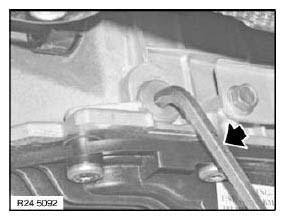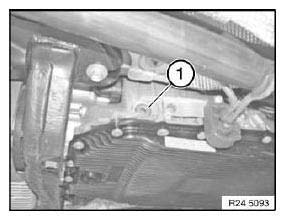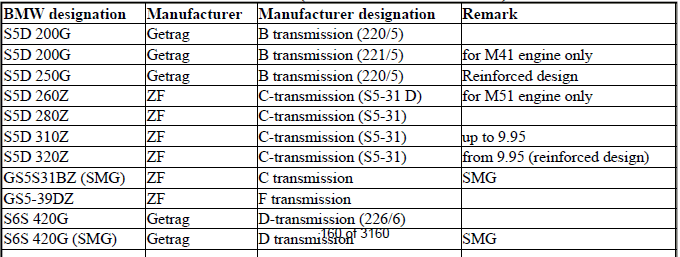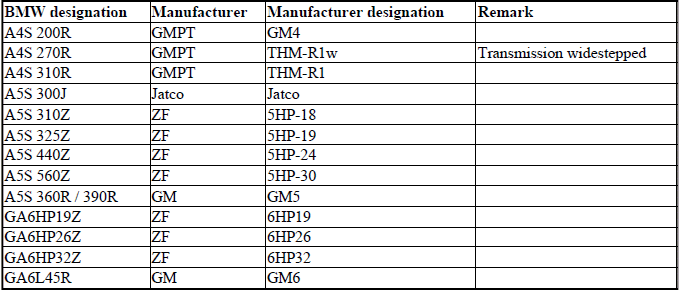BMW X5: Checking/Topping Up Fluid Level In Automatic Transmission (GA6HP26Z)
IMPORTANT: Use only the approved transmission fluid.
Failure to comply with this requirement will result in serious damage to the automatic transmission!
Installation:
Tighten down filler plug using
1. Hexagon wrench 8 A/F.
2. Torque wrench.
3. Socket 8 A/F.

Fig. 1: Hexagon Wrench 8 A/F
Topping up transmission fluid after a repair:
Stand vehicle on a level surface and secure against rolling off.
Undo filler plug (1).
Installation:
Replace sealing ring.
Top up transmission fluid until it emerges from filling orifice.
Start engine.
Replenish transmission fluid until it emerges from filling orifice.
Screw in filler plug (1).
Tightening torque.

Fig. 2: Identifying Filler Plug
Press brake pedal to floor and shift through all gears several times at idle speed. Then shift to "P" position (Park).
Then check fluid level.
Checking fluid level:
- Call up Service functions (Drive) in BMW diagnosis system
- Carry out fluid level check in accordance with instructions
TRANSMISSION DESIGNATIONS
Breakdown of BMW designation:
BREAKDOWN OF BMW DESIGNATION


Manual transmission:
BREAKDOWN OF BMW DESIGNATION (MANUAL TRANSMISSION)


Automatic transmission:
BREAKDOWN OF BMW DESIGNATION (AUTOMATIC TRANSMISSION)


